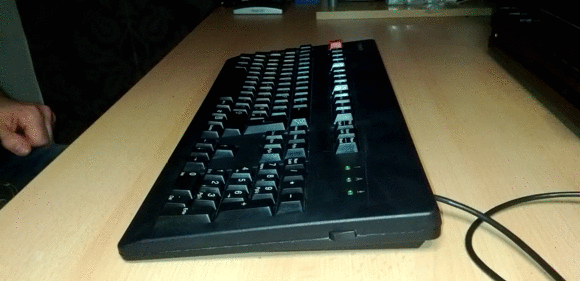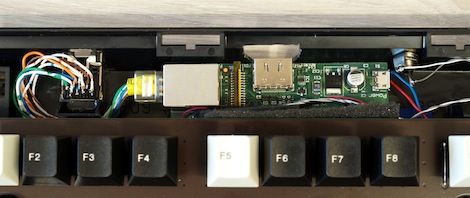
Wondering what the heck a lift kit is? You know those low-riding cars that bounce? That’s the idea with this hack. [Justblair] added automatic height adjustment to his Cherry G80, and hid a few other extras while he was at it. Since there’s a fair amount of room inside the case of this model he was able to hide everything and keep just a single cord to run it all.
Certainly what catches your eye is the keyboard’s ability to rise to a typing height automatically. This is accomplished with a few servo motors and some 3D printed replacement feet. There were some hiccups along the way with under-powered servos, but bulking up to some HXT 900 9G models provide more power than is currently necessary. The automatic feature is thanks to a capacitive sensor built with a wire that loops the perimeter of the keyboard.
Of course to monitor the sensor and drive the servos you need some kind of brain. For that [Justblair] went with an ATmega32U4 breakout board. Since he had to patch into USB for power anyway he added a USB hub and routed one of the ports out the left side of the keyboard as a convenient way to connect other peripherals. There was even room to include an RFID reader which he uses to unlock his sessions (similar to the desk install from earlier this year). There’s still a lot of potential left in that hardware. To make future improvements easier the hack includes an IDC socket as an auxiliary port.
[Justblair] did a great job of sharing his work. His post links to a Github repo for the code and a Thingiverse project for the 3D printed legs. And it wouldn’t be complete without the demo video which is found below.
Continue reading “Pimp My Keyboard: Automatic Lift Kit And More”












